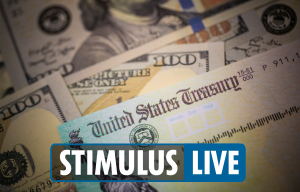
HOUSEHOLDS can save for their future pension by using a 401k account.
We explain how much you can contribute and withdraw from the employer-backed retirement account.
What is a 401k?
A 401k allows you to dedicate a percentage of your pre-tax salary to a retirement account.
Employers can also choose to match some or all of the contributions, but this isn’t required so it’s not guaranteed.
There are two basic types of 401ks – traditional and Roth – with the main difference being how they’re taxed.
In a traditional 401k, employee contributions reduce their income taxes for the year they are made, but they’ll pay tax when they withdraw cash.
With a Roth, employees make contributions with post-tax income but can make withdrawals tax-free.
How to boost your retirement savings
DON’T know where to start? Here are some tips on how to get going.
- Understand where you start: Before you consider your plans for tomorrow, you’ll need to understand where you stand today. Look into your current pension savings and research when you’ll be eligible for social security benefits, if at all.
- Take advantage of a 401k: The 401k plans are tax-effective accounts put you in a better place financially for your retirement. If you save, your employer may too.
- Take advantage of online planning tools: Financial provider Western & Southern Financial Group and comparison site Bankrate have tools that give you an idea of what your retirement income will be based on how much you’re saving.
- Find out if your workplace offers advice: Some employers offer sessions with financial advisers to help you plan for your future retirement.
How much can I contribute to a 401k?
Most employees can currently put in $19,500 a year of their own money in a 401k account, excluding employer contributions.
However, workers who are older than 50 years old are eligible for an extra catch-up contribution of $6,500 in 2020 and 2021.
It means over-50s can contribute up to $26,000 each year.
The current limit on total employer and employee contributions is $57,000, or 100% of employee compensation (a maximum of $285,000), whichever is lower.
For workers age 50 and up, the base limit is $63,500.
You can contribute to multiple traditional 401k plans and Roth 401k accounts in the same year, but your total contributions can’t exceed the annual limit.
Money guru Dave Ramsey recommends households to max out the amount of contributions, if you can afford it – but it will be a lot of money for some.
How much can I withdraw from a 401k?
You can withdraw any money you’ve put in a 401k early, but it should only be considered as a last resort.
This is because you’ll generally have to pay a 10% early withdrawal penalty if you take the cash out before you reach 59 1/2 years old.
You also have to pay normal income taxes on the withdrawn funds.
There are exceptions to the penalty though, such as using the funds to pay for your medical insurance premium after a job loss.
You can also take penalty-free withdrawals if you either retire, quit, or get fired anytime during or after the year of your 55th birthday.
This is known as the IRS Rule of 55.
Last March, former President Donald Trump also signed an emergency stimulus bill that lets those affected by Covid withdraw up to $100,000 without the penalty, even if they’re younger than 59 1/2.
Account owners also have three years to pay the tax owed on withdrawals, instead of owing it in the current year.
Alternatively, you can repay the withdrawal to a 401k and avoid owing any tax.
Lastly, you can also take money out of your 401k by taking a loan from your account.
The amount is limited to 50% of vested funds worth up to $50,000 – but keep in mind it must be paid back with interest within five years.
How do I get a 401k?
If you’re keen to save in a 401k plan, the first thing to do is to find out if you’re eligible by asking your HR department.
The plans are typically available to workers aged at least 21 who have worked at the company for one year or more.
However, some employers will allow new workers to join one straight away.
If your employer is offering one, you’ll likely have to fill in some paperwork, and decide how much money you plan to contribute.
Your employer will then set aside the cash from your salary before you’re taxed on it.
You also need to choose the appropriate investment options for your contributions.
For example, if your planned retirement is still many years away, it could be worth choosing a higher investment risk – as the rewards may be better.
However, if you plan to retire soon, it could be better with a lower risk.
As always with any investment, keep in mind you’re not guaranteed to make money and could actually make a loss.
We reveal how a simple trick can boost your social security payments by $600 to help in retirement.
Plus, we explain 20 ways to live comfortably off your social security checks.
Some households have to pay federal income taxes on their social security benefits – here’s what you need to know.






